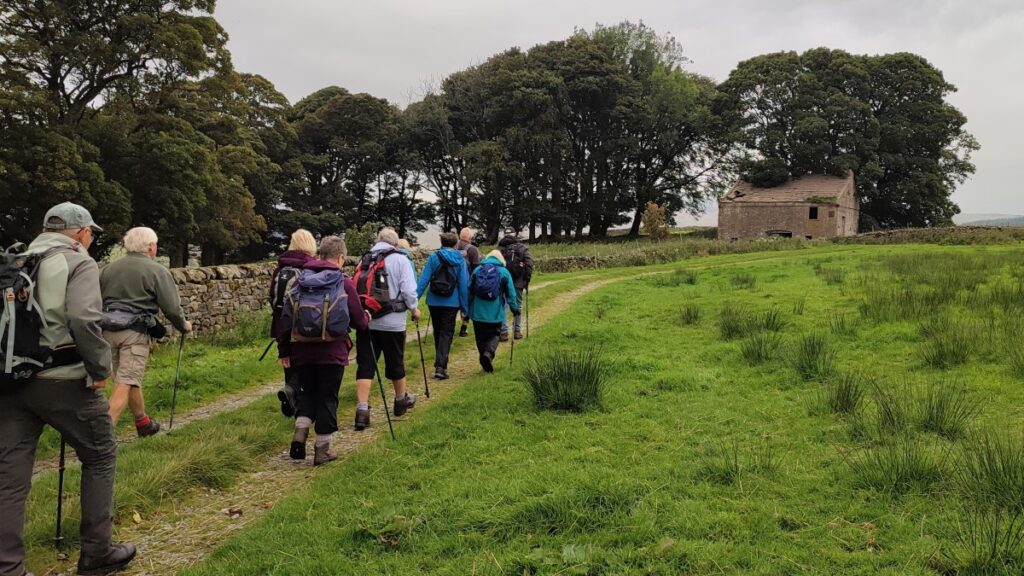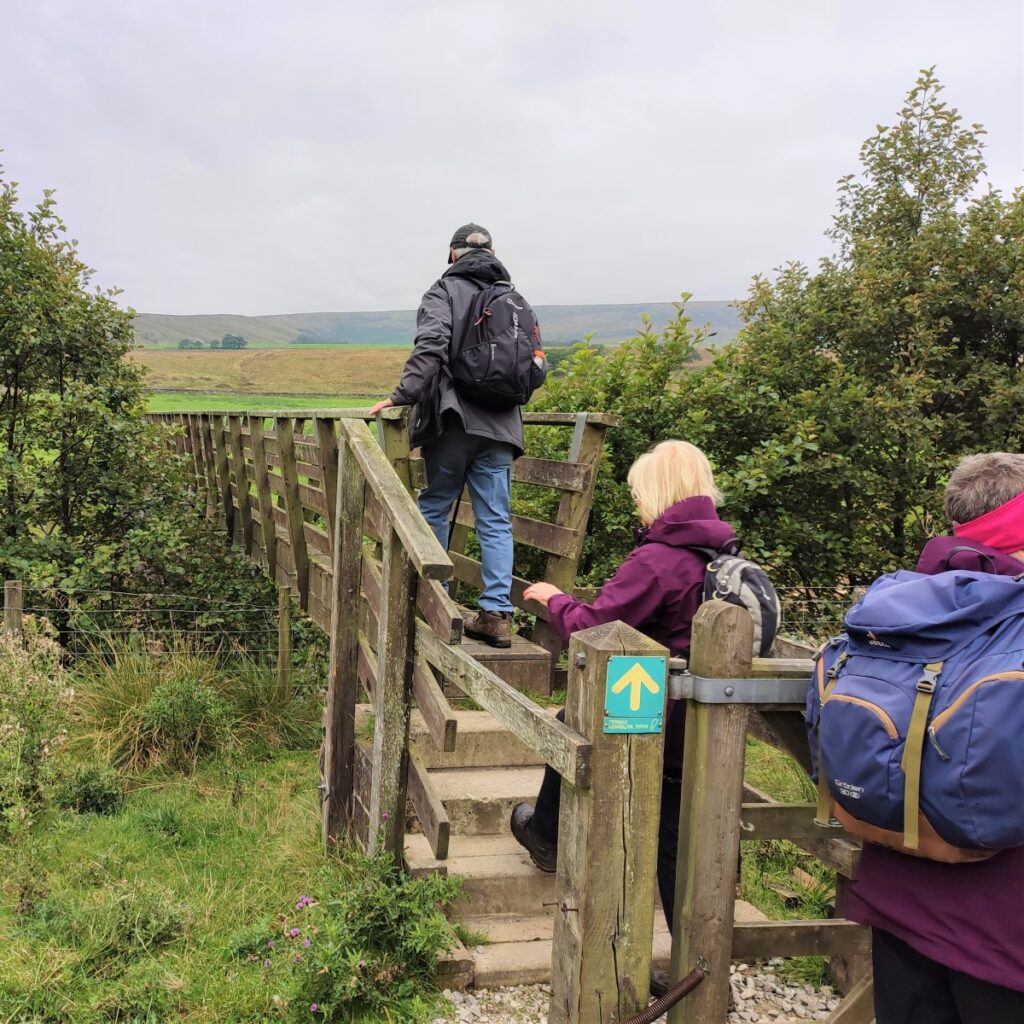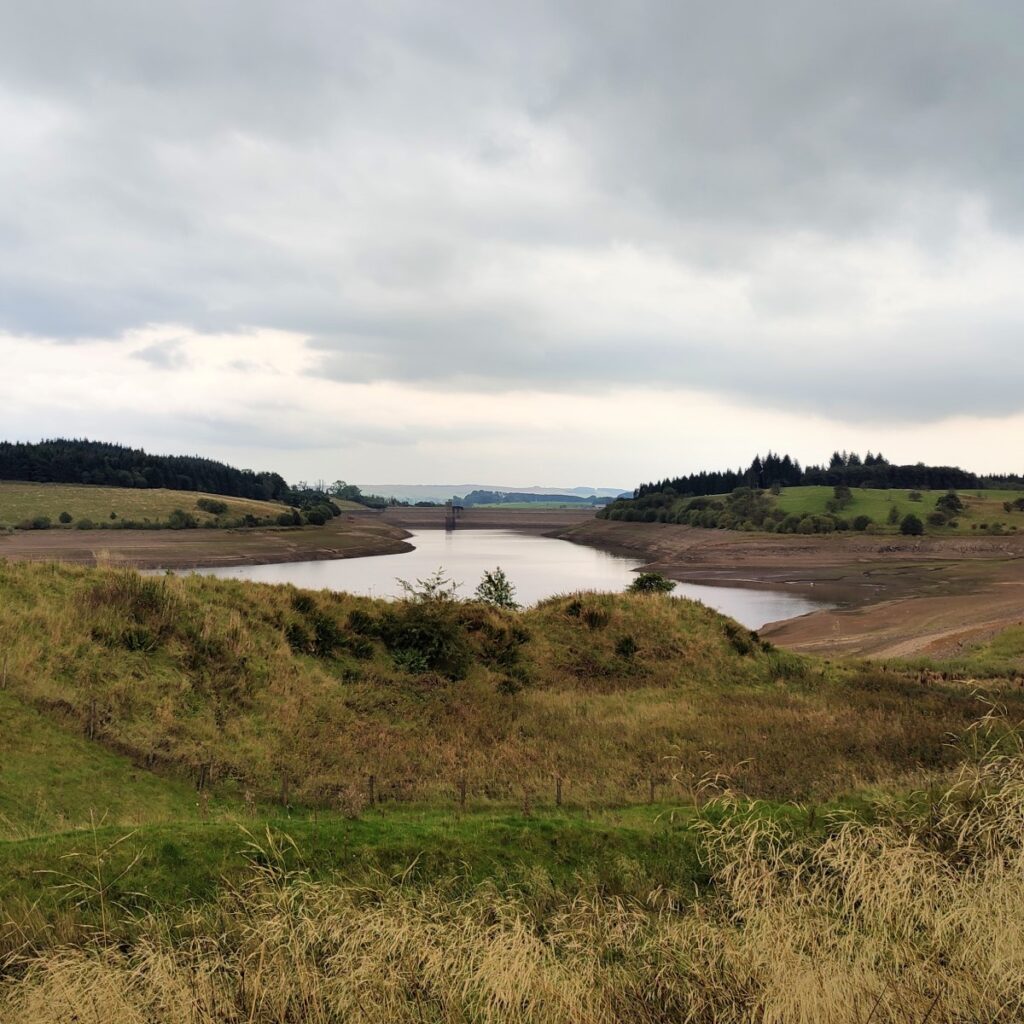Jump to . . .Step by Step | OS Map | Downloads | Gallery | Fly through
Stocks Reservoir is just a short drive from Bentham over interesting roads with great views, and when you get there, the choice of walks is impressive.
This walk starts from the causeway linking the two parts of the reservoir, and then loops around the southern, and much larger, part of the reservoir.
At the time of the walk the reservoir levels were deliberately very low – as part of engineering works to increase capacity in the long term.
On the way round this relatively flat route, we see signs of the buildings that were abandoned to enable construction, traces of the railway that enabled materials to be imported, and foundations for the village that temporarily housed the army of builders.
- Total distance 12.3 km (7.6 miles)
- Total Ascent 329 m
- Moderate walk
Step-by-Step
Stocks Reservoir belongs to United Utilities and sits within the Forest of Bowland Area of Outstanding Natural Beauty (AONB). So in addition to the walk we present here, lots of other information and alternate trails can be found at https://www.forestofbowland.com/ and https://www.unitedutilities.com/about-us/acres-of-nature/Bowland-Forest/
We start at the causeway which crosses the reservoir at the Northern end – if parking is not available there, there is alternate paid parking at the site of the old St James church, or at the AONB “Hub”. Both are visible from the road and are just a short walk from the causeway.
To help with navigation, satnav users can enter the postcode BB7 4TS or Hole House Lane, whilst the grid reference on the OS map is SD67096935. If What-3-Words is your preferred tool, then the tag circus.follow.emails is at the mid-point of the causeway.
We start by heading Northwest to the far end of the causeway where we see a gate giving us access to a track that follows the road. There is good tree cover between the path and the road, so we never feel like this is a road walk.
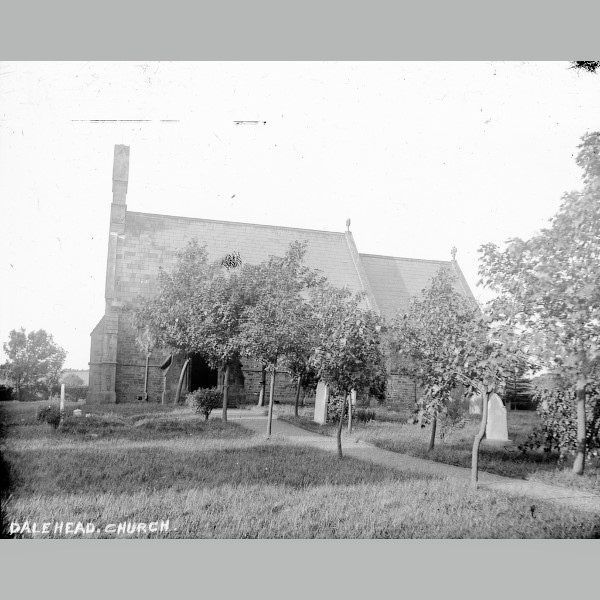
We follow the track for a short while until it brings us to an open area with paid parking. This is the site of the old St James church which was moved to enable building of the Reservoir in 1932 by the Fylde water board. The reservoir serves to supply Blackpool and the surrounding areas with drinking water.
The outline of the church is still visible – and much of the stonework was re-used in the current St James – a short distance past the other end of the causeway.
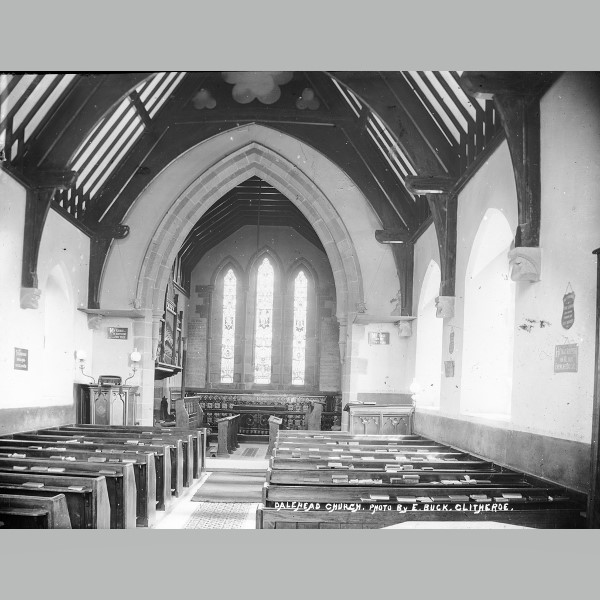
Looking at the remains, it’s easy to imagine that they are ancient, but 1932 is relatively recent, and so photographs of the church, and indeed much of the wider area prior to the building of the reservoir are available. These pictures come from an excellent site which is well worth exploring: https://redrosecollections.lancashire.gov.uk/
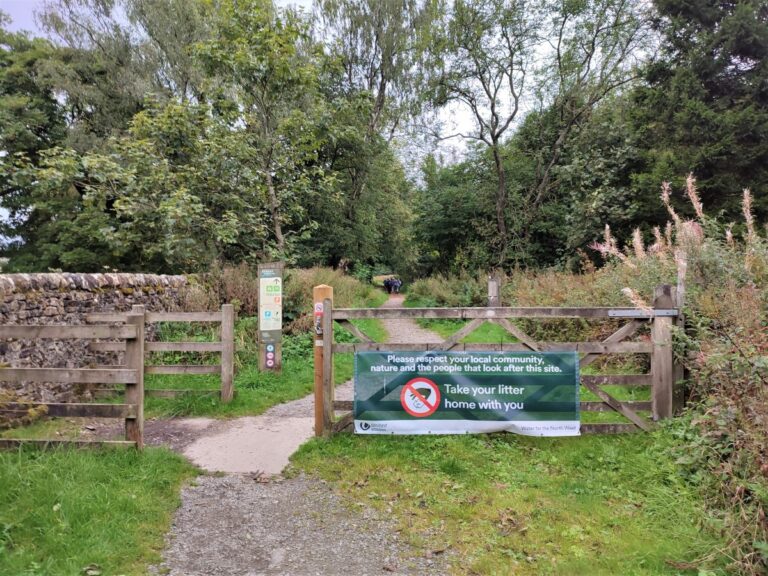
At the far end of the car park, we see a wide gate leading onto a well surfaced track – we follow this route for a while, ignoring smaller paths leading off on either side.
The further we progress, the smaller the track becomes, but at no time is navigation difficult, or anything other than obvious.
We soon arrive at a five bar gate with a kissing gate to the left, and we pass through here to follow the track down and slightly to the left through a field and down to a concrete slab bridge over a beck.
On the far side of the bridge, the lane heads uphill, and we follow it with a drystone wall on our left until we see an abandoned farmhouse ahead of us – this was Newhouse farm, and like many others, it fell into disuse when the reservoir was built: Not because the building itself was affected, but because the flooding of many acres of land left the farms non-viable.
At the old farmhouse, look out for a track on the left before the farm and follow that downhill to a gate. This takes us onto an area of open pasture with good views – both across the valley and down to a wooden footbridge, which is where we need to head.
The sides of the valley are steep at this point, and the path meanders down in a zig zag fashion, so don’t feel too concerned if it feels like we are heading away from the bridge initially.
At the bridge, we cross the river. This is the Hodder – the main source of water for the reservoir, whose origin is on Red Syke Hill near the Slaidburn Road out of Bentham.
At the far end of the bridge, there is a clear route diagonally across the field to a gate – this is easy to see and does not really coincide with the path noted on the OS map, so don’t worry too much if you are using the OS app and we seem to be off track.
From here the path follows a beck upstream – with the water on our right at all times – and as we climb further up the slope, we see a larger track crossing the path we are on. We turn left at the track and head slightly downhill.
We are now on what was once the railbed of a narrow gauge rail system that was used to transport building materials and day to day supplies to the dam site during the construction phase. An extensive 3 foot (914 mm) gauge industrial railway system linked the dam works with a railhead on the Long Preston-Slaidburn Road. Nearby stone quarries were also served by the railway, and steam traction engines hauled building material between the Tosside railhead and a water board yard adjacent to Long Preston railway station.
We follow the old rail bed for a while now, generally in a South easterly direction, and again we find that the clear and obvious route on the ground differs from the published route on the OS map by a few metres.
The track soon starts to bend to the right, following the contours of the adjacent Eak hill, and we now start to get good views over the water toward the dam at the Southern end of the reservoir.
A little further round Eak Hill, and we find ourselves at the shore of the reservoir with a building ahead of us. We pass the building (until recently a café) on the right, and head downhill now on a small, metalled road.
To our left is a headland with bird watching hides, and adjacent to the road is a tree trunk which serves as a convenient place to break for lunch.
From here we continue in the same direction as before and almost immediately find ourselves in the Bowland Memorial Forest, a site run by a not for profit organisation called life for a life, which uses donations to plant trees and provide memorial benches in a variety of beautiful locations as well as raising money for charity.
Slightly further on, keep a look out for the remains of low concrete walls and other built structures on both sides of the road. Theses are the remains of the buildings that formed a temporary village called Hollins which housed more than 500 men involved in the building of the dam.
Further on still, the road starts to bend left, and we see the Board House – the grand house used by the Fylde Water Board, and more recently by United Utilities as a meeting place and training centre. It seems safe to assume that the conditions in Hollins were somewhat less plush than Board House.
We are now at the North-western end of the dam, and under normal circumstances, the path would pass along the top of the dam giving us good views down the length of the reservoir. At the time of our walk however, construction works to raise the level of the top of the dam and therefore increase storage capacity were under way, so a temporary footpath diversion takes us along the base of the dam to the far end. This gives us views over the two water treatment plants on site – collectively known as Hodder water treatment works. Looking down from the dam, the original works are on the left, with a larger and more modern addition nearing completion on the right.

At the south-easterly end of the dam we cross a foot bridge over a spill way. Under normal circumstances this allows a gentle flow most of the time, as inputs via the Hodder typically exceed drawings by the treatments works. At the time of our walk, the level of the reservoir was remarkably low – not just because we have had a dry summer, but because the level has been reduced to enable the current upgrades.
The reduction in level reveals much of the infrastructure that would normally be submerged. For instance, the valve house from which water flow to the works is controlled would normally appear like small room at the end of a gantry rather than a tall tower connected by a bridge over a deep gorge.
The path now continues North following the shore, keeping the woodland of Ten Acre Hill on our right. As we follow the shore around, we see elements of the route we walked earlier in the day on the far side of the water.
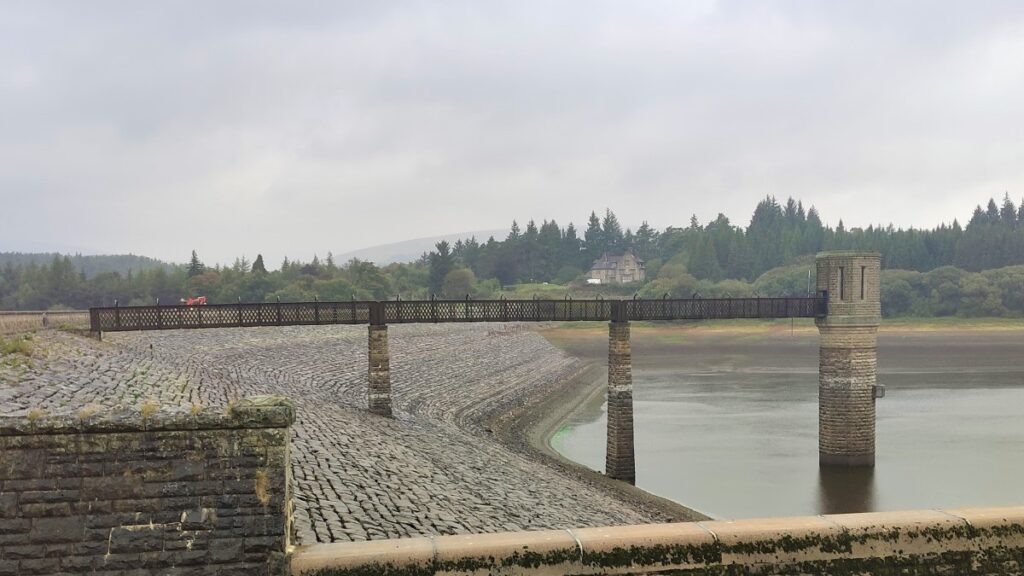
We soon approach a very high fence – this is a deer fence designed to stop deer accessing the recently planted woodland beyond and eating the tender shoots. We enter the woodland via the gate.
We continue through that woodland – the path remains clear, and soon arrive at the minor road where we started. We turn left here, but we don’t need to walk on the road for more than a few meters – there is again a path on the left of the road which safely separates us from the traffic.
This path returns to the road at the end of the causeway, and here the walk ends.
- Total distance 12.3 km (7.6 miles)
- Total Ascent 329 m
- Moderate walk


